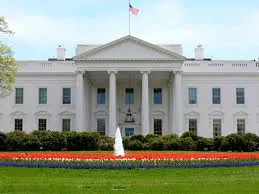Executive Order Issued to Expand Access to Alternative Assets for 401(k) Investors
 On August 7, 2025 an executive order was issued which aims to broaden the investment opportunities available to Americans saving for retirement through defined-contribution plans like 401(k)s. Traditionally, these plans have limited access to alternative assets—investments outside of publicly traded stocks and bonds—despite their growing role in institutional portfolios such as public pension funds.
On August 7, 2025 an executive order was issued which aims to broaden the investment opportunities available to Americans saving for retirement through defined-contribution plans like 401(k)s. Traditionally, these plans have limited access to alternative assets—investments outside of publicly traded stocks and bonds—despite their growing role in institutional portfolios such as public pension funds.
What Are Alternative Assets?
The order defines alternative assets to include:
(i) private market investments, including direct and indirect interests in equity, debt, or other financial instruments that are not traded on public exchanges, including those where the managers of such investments, if applicable, seek to take an active role in the management of such companies;
(ii) direct and indirect interests in real estate, including debt instruments secured by direct or indirect interests in real estate;
(iii) holdings in actively managed investment vehicles that are investing in digital assets;
(iv) direct and indirect investments in commodities;
(v) direct and indirect interests in projects financing infrastructure development; and
(vi) lifetime income investment strategies including longevity risk-sharing pools.
Key Actions
The executive order directs the Department of Labor to:
- Reexamine and potentially revise past guidance that may discourage alternative asset inclusion.
- Clarify fiduciary responsibilities under ERISA (the Employee Retirement Income Security Act) when offering such investments.
- Propose new rules or safe harbors to reduce legal risks for fiduciaries.
- Collaborate with other federal agencies, including the SEC, to explore regulatory adjustments that could make alternative assets more accessible to everyday investors.
Impact to Plan Fiduciaries
Plan sponsors will want to discuss with their advisors and ERISA counsel as to whether alternative assets are appropriate investment for their plan. While much of the discussion will center around the risks, returns, restrictions, liquidity and suitability of such investments for their plan participants, plan sponsors will also want to consider checking with their benefit plan auditors to determine the impact alternative investments may have on the audit of their plan.
Alternative investments, depending upon their structure, may not be covered under the ERISA Section 103(a)(3)(C) certifications of many banks, trust or insurance companies, and therefore, could require additional audit procedures if the plan is subject to audit. Also, current audit requirements, before any changes resulting from this executive order, generally require even small plans (plans with less than 100 participants with account balances) to have an audit if less than 95 percent of plan assets are “qualifying plan assets.” Alternative assets, to date, do not typically meet the current definition of “qualifying plan assets.” As a result, small plans which currently are not subject to audit but take action to include alternative assets could find themselves subject to an audit, if the DOL does not issue guidance to change the definition of qualifying plan assets and/or take other actions.
